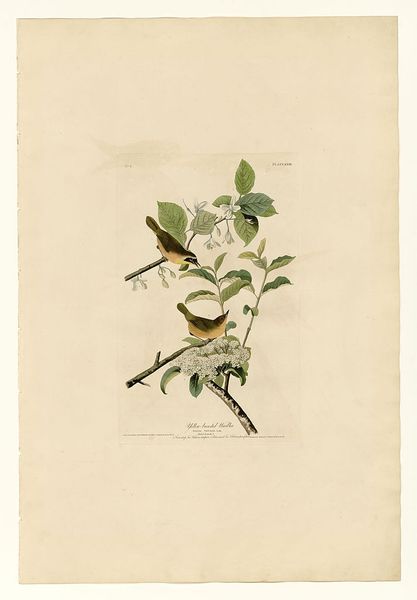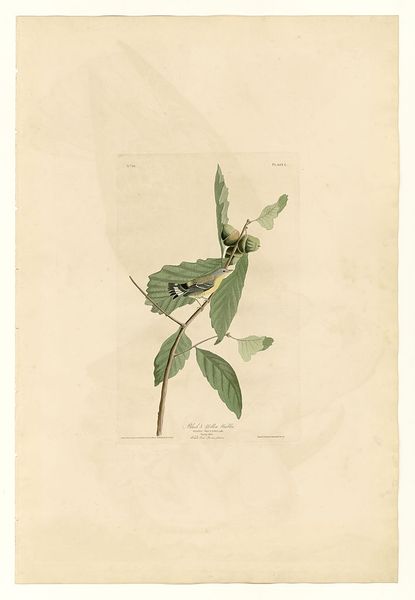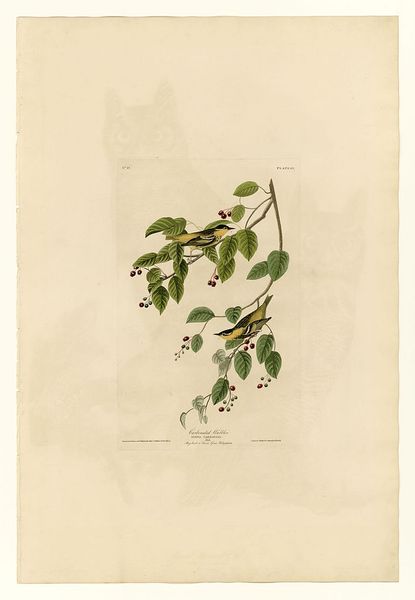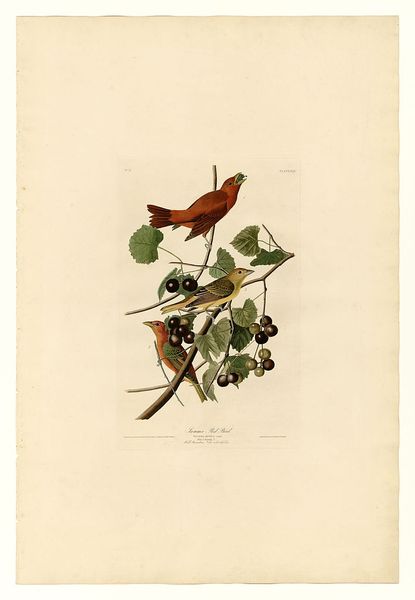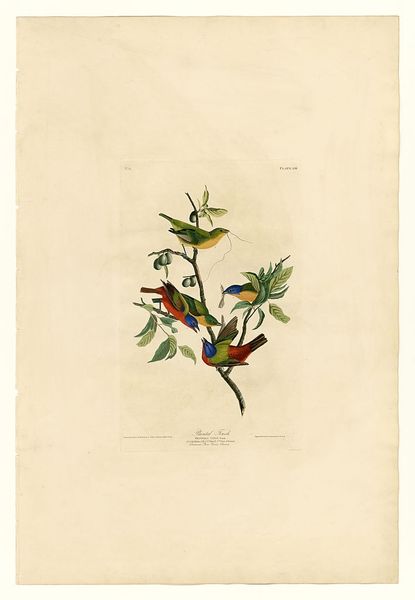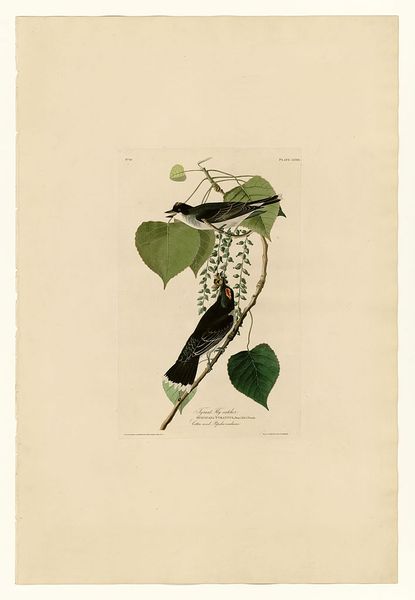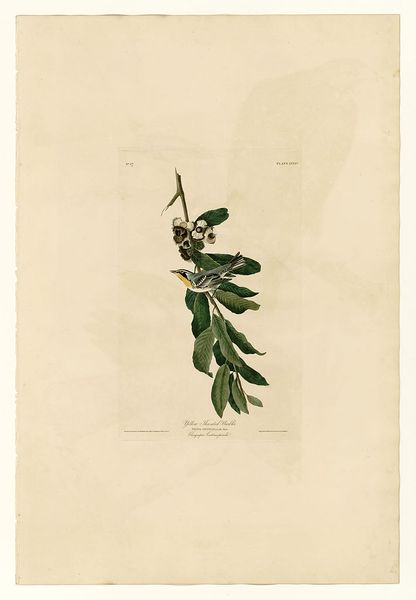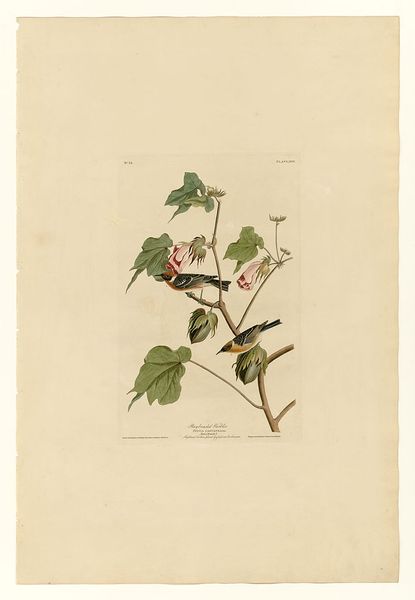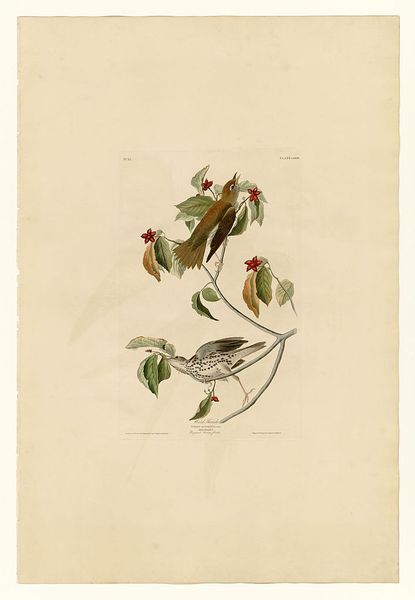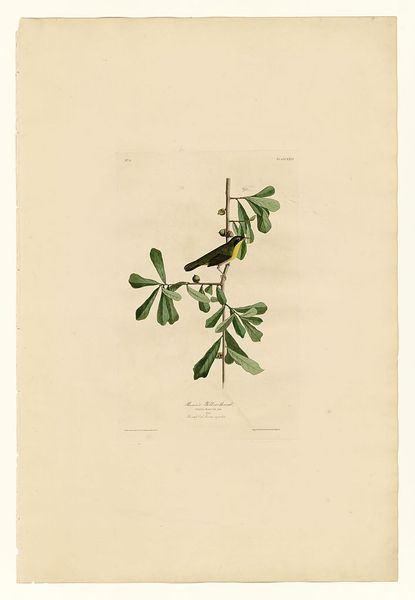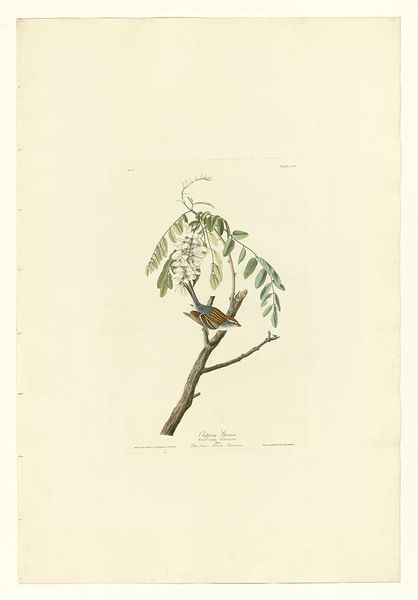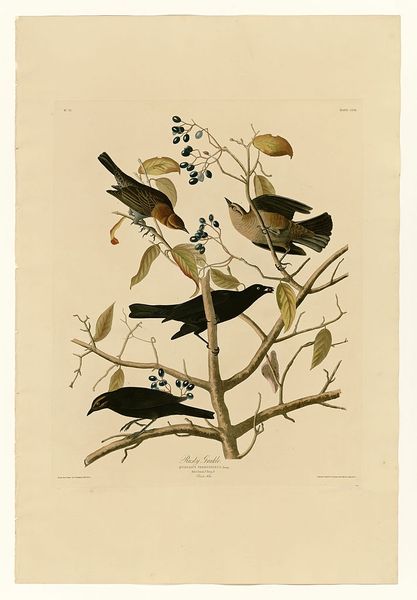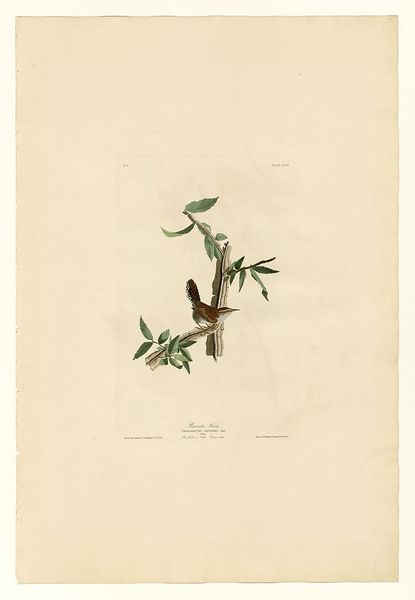
drawing, painting, print, paper, watercolor
drawing
painting
landscape
bird
figuration
paper
watercolor
watercolour illustration
botany
academic-art
naturalism
realism
Copyright: Public domain
Curator: Today we are looking at "Plate 8 White-throated Sparrow", an illustration attributed to John James Audubon. The artwork depicts a pair of birds perched on a flowering branch, meticulously rendered in watercolor, drawing, and print techniques, all on paper. Editor: What strikes me immediately is this airy lightness, almost like they are little watercolor dreams perched on a fragile branch. It’s incredibly detailed, yet there's an ethereal quality. I almost feel like I could touch the paper and it would simply dissolve into mist. Curator: Audubon's work is significant when viewed through the lens of natural history and colonial encounters. His depictions often aestheticize nature, yet we must acknowledge the complex socio-political context in which these representations were made. How does the work play into ideas of conquering nature? What biases are evident? These questions demand critical interrogation. Editor: You’re so right; beyond its sheer beauty, there's a sense of dominion lurking. Still, personally, it brings to mind lazy spring days. Do you know that feeling when sunlight dapples everything in these fleeting moments of golden bliss? That’s this picture. Curator: Well, thinking about it historically, that blissful scene is a very curated perspective. How do we reconcile the violence inflicted on indigenous communities and ecological devastation perpetuated through expansion, as we consume images celebrating the "beauty" of untouched wilderness? We really can't look at Audubon uncritically. Editor: I completely hear you. The inherent tension between objective beauty and the underlying narratives definitely prompts introspection. The delicacy, for me, however, offers a path to gentle appreciation…to be more responsible to what's there. Curator: Precisely! Understanding Audubon is less about a purely aesthetic gaze and more about confronting uncomfortable truths. This forces us to be more attentive to the colonial roots intertwined with the art. Editor: It's funny; looking closer now, I see it differently. Maybe it really isn't about "beauty" at all. Perhaps, it's just simply documentation, filtered through perception—imperfect as that inevitably might be. Curator: Ultimately, engaging with "White-throated Sparrow," requires an embrace of contradictions—to honor skill, confront exploitation, and ask: who and what do we erase to maintain a nature “ideal”? Editor: I am leaving here thinking that art may be as deceptive as reality can sometimes feel... it's beautiful and sad at once.
Comments
No comments
Be the first to comment and join the conversation on the ultimate creative platform.
